Winter food is different than other seasonal food and yet no less amazing, wonderful, and creative. Winter season food is healthy and yes, full of comfort for cold weather and beyond.

This is the time of year in which we eat seasonal produce but also make use of all the preserves we made in the rest of the year. Use these ideas for making the most of fresh and preserved food for delicious meals all winter long.
Balancing Local & Seasonal Food
It is an admirable goal to eat only or mostly local food. However, it can be very difficult to maintain and it can get boring depending on location in the world.
[mailerlite_form form_id=5]Rather than striving for something that is hard to achieve, find a balance in your seasonal meal plan. Eat local and in season whenever possible. Use in season but not necessarily local food to fill in the gaps.
In season food will always be less expensive in the grocery store. Sweet potatoes are cheaper in winter, for example, and asparagus is likely astronomical in price.
Winter Vegetables
For those living in the north, not much is actually growing in the winter but there are definitely vegetables that are in season even under the cover of snow. Many of these are vegetables that are inherently good keepers without needing much extra preservation.
In warmer climates, there are likely plenty of things growing that make fresh eating easier. Either way, many of the same vegetables are in season for all climates.
Hearty Greens, Micro-Greens and Sprouts: In warmer climates local and/or homegrown greens might still be available. Things like kale, chard, and cabbage might be easy to find.
In the colder locations growing bean sprouts or micro-greens for fresh and nutrient dense fresh greens is easy and fun.
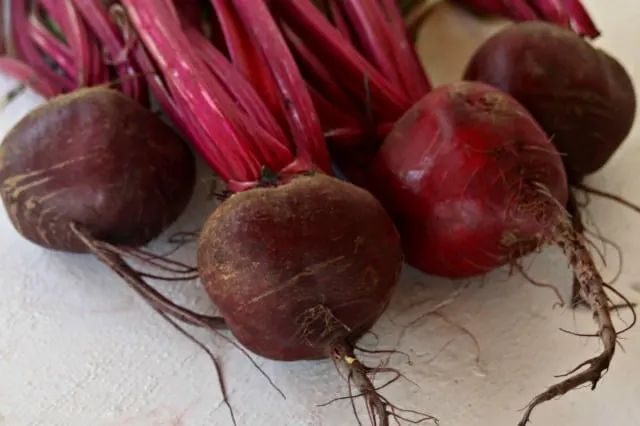
Root Vegetables: Beets, potatoes, carrots, sweet potatoes, turnips, rutabagas, yams, parsnips, etc. All of these humble root vegetables can be found most of the year because they store incredibly well.
They’re frugal, full of flavor, healthy, and incredibly adaptable as side dishes, soup ingredients, casserole fillers, and more.
Dried Beans: The humble dried bean is often overlooked as boring or fussy but is neither. Again, dried beans can be found most any time of year and frugally at that. However, winter is a great time to take advantage of their hardiness and long cooking time.

Winter Squash: Pumpkin is not the only option, in fact it probably isn’t always the tastiest winter squash option. Scour local farms and the grocery store for different, flavorful options.
Experiment with all the different types and find what you like best. Try spaghetti, acorn, buttercup, hubbard, and whatever is easily found and cheap. Most winter squashes can easily be substituted for one another in recipes so don’t get worried about specific varieties.
Make your own pumpkin puree from any winter squash and skip the expensive canned version on the grocery store shelves. Use this puree for soups, pies, baked goods, casseroles, and more.
Winter Fruits
Like vegetables, in the north most of the winter fruits are things that store really well or come from other locations where they grow naturally. Remember balance is the key.
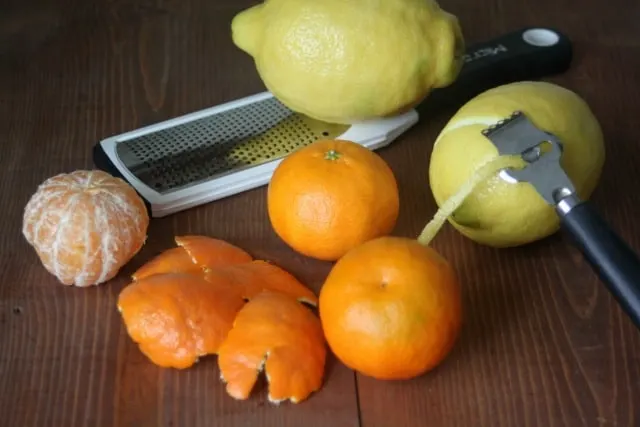
Citrus Fruits: Oranges, lemons, limes, grapefruit, and more are in season in the winter. Take advantage of their vitamin C and deliciousness. Eat them as snacks, for breakfast, in salads, and more.
Apples: Mostly thought as of a fall fruit, apples store well meaning they can often be found in winter for a frugal price. Eat them fresh for a change from preserved fruits
Pears: Like apples, pears store incredibly well meaning they can be eaten fresh through much of the year and make for an interesting, fresh change in the winter season.
Using the Pantry
Winter is the time to use up the pantry that was built it up over the spring, summer, and fall.
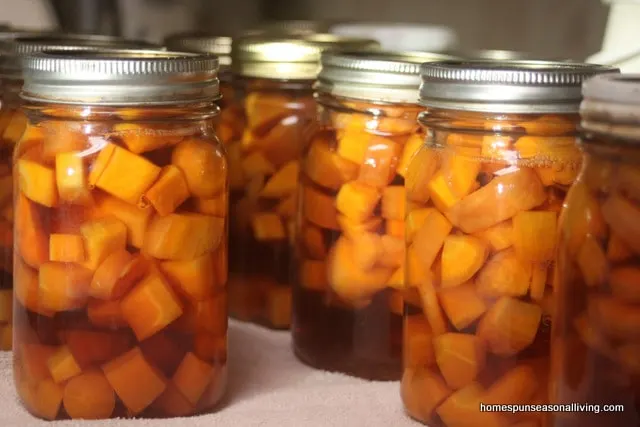
Put the frozen pesto over top pasta, rice, or baked potatoes. Eat the canned fruit as snacks or put into dessert. Put the canned green beans into soups. Serve the pickles and sauerkraut as side dishes. Toss the dried fruits into oatmeal.
In short, eat like royalty because of all the hard work done in previous seasons.
Winter Meal Planning
Despite being a lean season, winter still provides plenty of food for creative and easy cookery. Don’t let the idea of seasonal cooking become a sticking point. Simply cook familiar foods from the list above in favorite ways. Some simple ideas include:
Soups & Stews
These one pot meals tend to be warming and filling on cold winter days. Use combinations of root vegetables with meats, home-preserved vegetables, dried beans, and grains.
These can often be whipped up in a hurry on the stove top or cooked all day in a slow cooker. Soups may be humble in nature but they can be bowls packed with comforting nutrition.
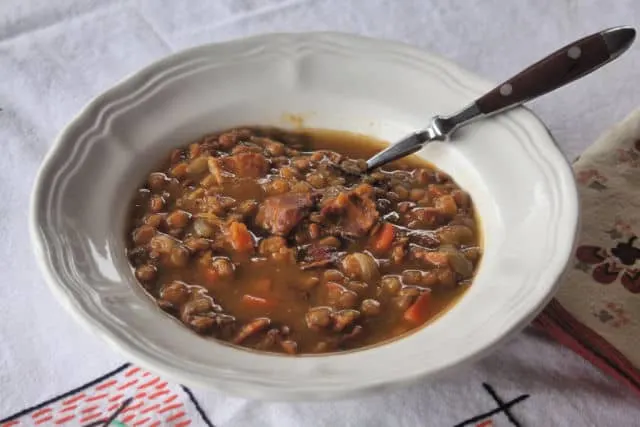
Simple Courses
Meals don’t have to be time intensive affairs. Keep it simple – broil a pork chop and serve it with some canned green beans and homemade rolls.
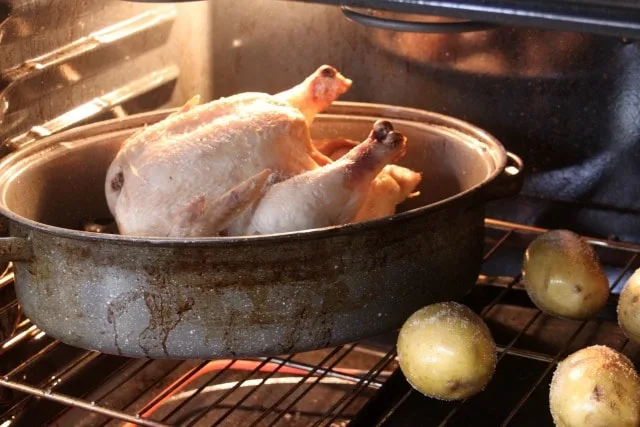
Roast a whole chicken and bake potatoes at the same time. The long cooking time will help warm up a house too.
Pack lunches with small salads of micro-greens, canned pickles, dried fruit, and some granola. A breakfast of broiled grapefruit and toast is always nice with some tea or coffee.
Put a whole roast in the crockpot with carrots and rutabagas. Nothing complicated or very time consuming but all delicious and nutritious.
Casseroles
Winter does tend to be a time of richer, denser food as our bodies try to keep warm. This does not mean we have to eat dishes laden with canned cream of mushroom soup.
Make homemade casseroles from pasta, sauce, meats, and veggies. Layer taco seasoned meat or beans with salsa and tortillas for a tex-mex style lasagna. Bake winter squash with noodles and cheese for a healthier twist on the standard macaroni and cheese.
Pizza
Pizza never goes out of season but it definitely has a place in the winter season meal rotation. Sprouts and sauerkraut make excellent pizza topping as do that bits of local meats and other vegetables.
Pizza is almost always welcome, makes a fun family movie night dish, and is even great for casual company. It’s an easy way to introduce seasonal eating to skeptics, too.

Recipe Inspiration
Find inspiration and specific recipes for winter cooking in these resources:
Recipes from the Root Cellar by Andrea Chesman – This cookbook is one of my absolute favorites and will give you tons of ideas for all those winter vegetables.
Bean by Bean by Crescent Dragonwagon – Dried beans can be boring if we fall into a rut. This book will give you so many ideas.
Full Moon Feast by Jessica Prentice – This book covers more than just winter but the focus on seasonal living with appropriate recipe inspiration make it a consistent favorite of mine.

Celebrating Winter Seasonal Eating
The thing with seasonal living and eating is that isn’t about deprivation or denial at all. Rather, seasonal eating is just another way to enjoy winter.
Enjoy with delight the oranges. Eat winter squash in every imaginable form from savory to sweet. Instead of missing the glory of summer fresh tomatoes celebrate with glee the micro-greens on the windowsill.
Christina
Friday 7th of December 2018
This is a wonderful article! Thank you for sharing it. I was just looking up seasonal eating for the winter months and this was a good one.
Kathie Lapcevic
Sunday 9th of December 2018
I'm so glad you found it helpful!
Shruti Singh
Friday 16th of November 2018
In winter many times immunity power decreased due to cold which results in illness. Eating healthy food in such cold can help us to stay fit and gain immunity power. I am obliged for this article, it is helpful to survive through cold.